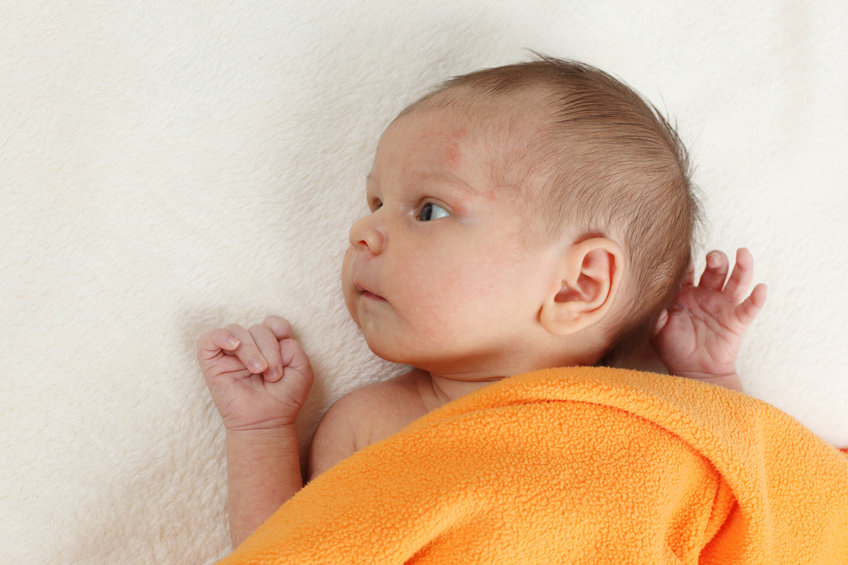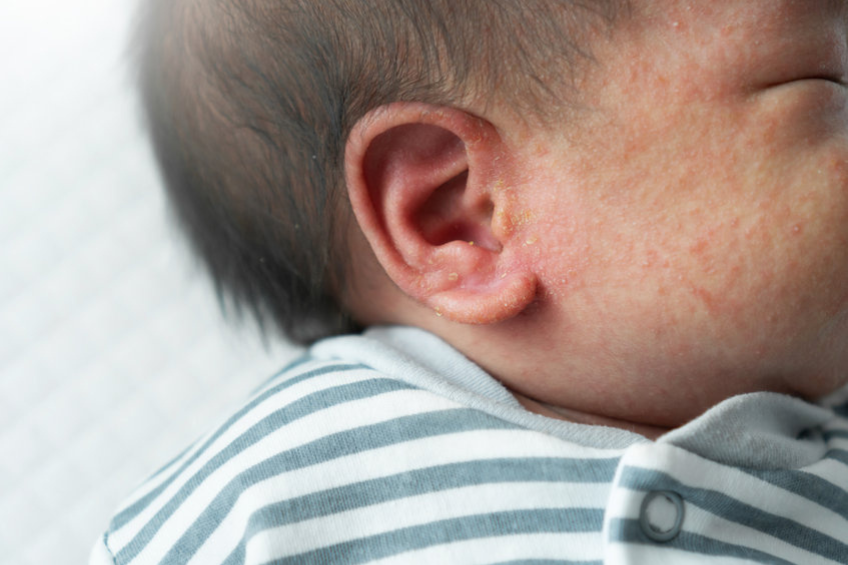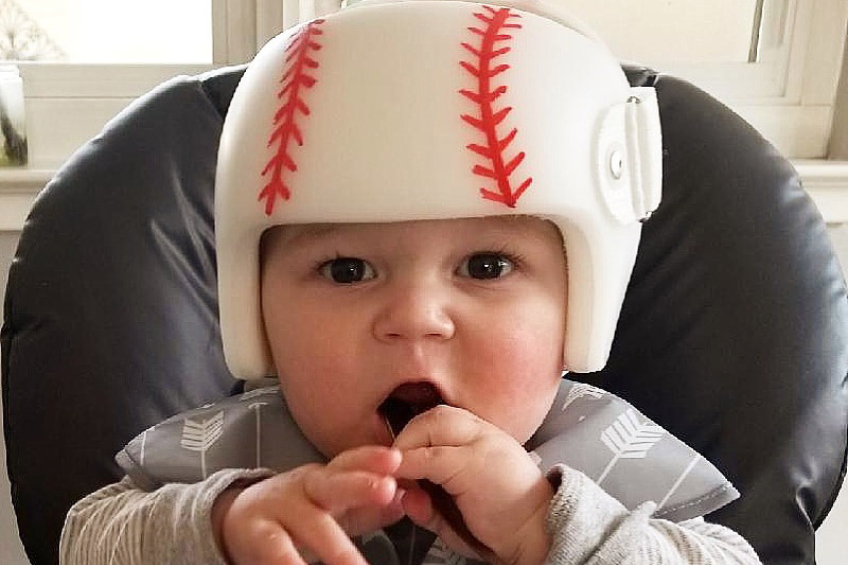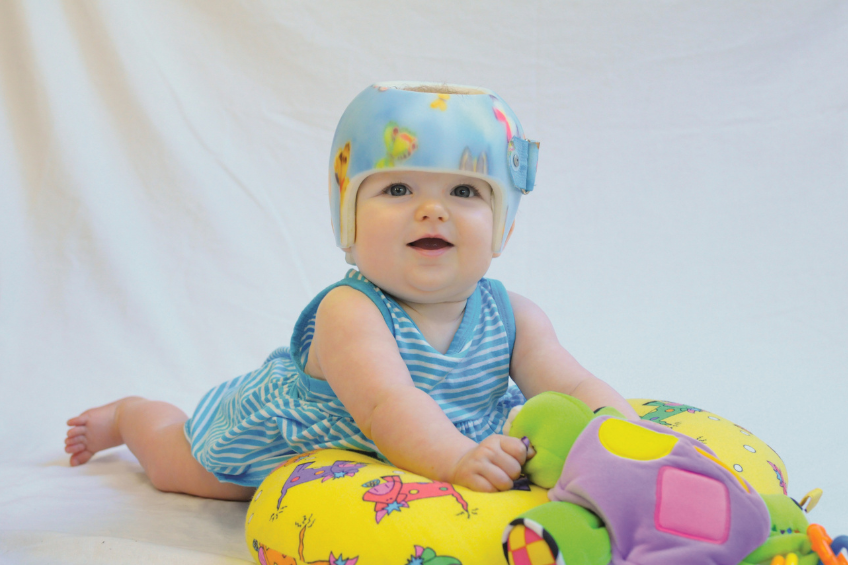Cranial Helmets and Your Baby’s Skin
/
When a parent finally takes the step to get their baby fitted with a cranial therapy helmet, he or she is sure that that is the most important decision he or she has made in the care and development of their infant. The different worries that this parent has are still in front of them, but she is determined to make the therapy work. Some of their concerns are how will the baby sleep? Will the baby be in pain while wearing it? What will I say to people when they ask about the helmet? However, one circumstance that a select group of moms have come across is one that most did not foresee. That is red pressure spots or other types of rashes on the baby’s head.

Call it contact dermatitis, eczema, heat rash or pressure point issues; it is a predicament that must be dealt with immediately. Now, there are many babies who will not develop any such rashes and that’s great but for the various cranial helmet wearers that do, it can be itchy, painful for them and frustrating and depressing for the parents.
We can explain the different reasons for a rash or red spot to occur but the bottom line for any parent is what to do and how to solve the issue as soon as possible with the least amount of reduction in helmet wearing times.
Heat Rash
The time of the year that the rash happens can be significant in the solution to the problem. Since the cranial helmet is generally worn for several months, there is bound to be a warmer season during the treatment. If the treatment starts in the spring, summer, fall, or winter it will end up going into a warmer season. In warmer climates heat will always be one of the main issues to cause a rash.
Eczema
Certain babies and families are more susceptible to eczema. Some babies will have eczema on their faces that has nothing to do with the helmet. All the baby has to do is drool during a single naptime and they can wake up with a red patch on their cheek on the side they favored while sleeping.
Pressure Point Issues
Sometimes there are certain points on the baby’s head and face which are irritated by the helmet as it molds and makes contact in specific areas.

Personal Stories
1) Monica’s baby’s rash would appear every time she put on the helmet. Her orthotist did not conclude that her baby was necessarily allergic to the helmet because the rash was always at exactly the same place on his head. At first the cranial center specialist thought the rash was sweat related and the parents took the baby back each week for a total of six weeks to be evaluated. This particular orthotist ended up placing some moleskin inside the helmet which did the trick. After that the rash went away and never returned. The baby had to, however, spend a substantial amount of time without the helmet and this increased the treatment time.
2) Another baby had plagiocephaly since she was two months old. After being checked at 4 months and asked to come back, she was fitted with a cranial helmet at 7 months of age. All was fine for about six weeks and her mom was already noticing improvement until the helmet began causing skin issues. The pediatrician diagnosed the problem as contact dermatitis and instructed the mom to remove the helmet for a few days and the rash disappeared. When the helmet was replaced, the dermatitis came back with a vengeance worse than before. In addition, the baby developed seborrheic dermatitis (cradle cap). The mom tried one of the most common suggestions which is Aveeno. She also tried Aveeno baby eczema therapy cream and Aquaphor. The helmet was put to rest for several days and the rash disappeared again. Her Orthotist suggested a special sock to soak up the sweat and prevent another breakout incident. This mother is so confused as to what to do next. Someone suggested strong steroids or disposing of the helmet. Hopefully her appointment with a pediatric dermatologist will solve the problem.
3) Rachel’s baby, Chucky, was four months old when he started wearing his helmet. About six days into treatment Rachel noticed a bright red patch on the side of his face near his ear. “It almost looked like a burn”, described Rachel. The first thing Rachel did was call the clinic and spoke to a professional who advised her to discontinue the wearing of the helmet until she brings the baby in. She was able to get an appointment that same week. Meanwhile she was instructed to use Aquaphor to help heal the rash. At the clinic, the helmet was shaved down where it had been rubbing. It took approximately one week after that for the rash to subside and it was relatively smooth sailing from then on. The orthotist advised Rachel to clean the helmet with alcohol no more than twice a week and the rest of the time with Johnson and Johnson baby soap. The hour that Chucky was free of the helmet each day was the time Rachel cleaned it and after the hour was up the helmet was dry in time to resume treatment.
What’s a Parent to do?
Some orthotists will use moleskin at the point where the cranial helmet is irritating the baby’s head. According to Wikipedia, moleskin is a heavy fabric made of cotton. It is also used for adhesive pads that are stuck to the skin to prevent blisters in other situations. Not all cranial specialists agree with putting anything between the helmet and the head.

The common maintenance of the helmet is to use 91% alcohol to clean the inside of the helmet and then wash it in warm water with a baby liquid soap. The helmet should be thoroughly dried before returning it to the baby’s head. For example, most cranial orthotists believe that the main problem is the warming of the baby’s head from the helmet and the subsequent sweating that causes heat rash. In the springtime when the baby goes outside and stays in the sun for longer periods, the baby should be dressed coolly so as not to overheat and to keep towel drying the helmet when that one hour of helmet free time comes along. Never put the helmet back on when it is wet and sweaty. Also, if you are removing the helmet in the car to go swimming or another helmet free activity it is imperative that the parent does not leave the helmet in the car to heat up. It’s not because the helmet will get ruined but because it’s so important to keep the helmet as cool as possible to prevent heat rash.
Parents in cranial therapy helmet forums claim that different brands of helmet are better than others. One mother claimed that her baby’s helmet was the cause of the rash but then another mother claimed a different type of helmet caused her baby’s rash. One forum claimed that their company treated over 35,000 babies and not one has had an allergic reaction to the band. They do not believe in placing any additions between the skin and the band liner and have been able to solve any rash issues without using these accessories. The crucial point is that the helmet fits properly.
Conclusion
Dealing with a contact rash is a complicated issue. Some babies have such sensitive skin that anything will cause a rash to flare up. Heat and sweat are enemies of any cranial helmet and this is a huge challenge for parents to weather. Time is of essence and some parents will be so diligent and not take off the helmet no matter what is going on underneath. Others will take the opposite approach and keep it off for a few days and then on again and then off again. This interrupts the normal train of therapy because it causes the head to regain it’s initial misshape.
Some therapy centers will allow something soft such as moleskin to cushion the helmet in certain painful areas while others do not believe in putting anything between the head and the helmet and will shave the helmet if needed.

The helmet is especially made for each individual baby and even a thin layer of fabric between the helmet and the baby’s head can misalign the helmet and ruin the therapy. This is something that can only be done under the expertise of a cranial clinician. Even if the pediatrician or the dermatologist insists that a barrier be introduced, it is of the utmost importance to ask the cranial therapy center permission. Sometimes parents must visit the cranial center weekly until an optimal solution is addressed. Possibly a simple answer such as baby powder to keep the sweating at bay may work. Again, only with the permission of the orthotist. If you believe that your baby is sensitive to alcohol, ask your cranial specialist if you can use an alternate sanitizer. The balance of keeping your baby comfortable and rash free and the temporary inconvenience of the baby helmet is a challenging experience for young parents but ask any toddler’s parent whose baby had cranial helmet therapy and chances are they will tell you it was all worthwhile.

Cranial Therapy Centers is the only early interventions cranial center in the United States which provides both helmet and manual therapy treatment. We are American Board for Certification in Orthotics, Prosthetics and Pedorthics Facility. Visit us in Lakewood NJ, at 1352 River Ave Unit 14, Lakewood NJ, 08701 or in Teaneck NJ at 1086 Teaneck Road Suite 3F, Teaneck, NJ 07666. You can also email us info@cranialtherapycenters.com
